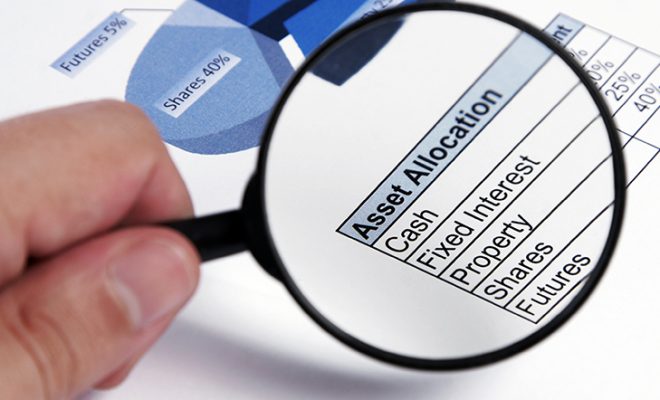How Pensions and Social Security Affect Asset Allocation?

Social Security and pensions can be a big help when you are finally ready to hang up your work shoes. They offer steady income, month after month, and can take a load off your shoulders in retirement.
But they are rarely enough on their own. You would likely need other investments, such as stocks, index funds, bonds, gold, real estate, and even some commodities or foreign currencies, if you are feeling adventurous. These can potentially help you build a cushion that can handle inflation, financial emergencies, or the regular retirement lifestyle you have promised yourself.
Now, some folks do not include their pension or Social Security benefits in their asset allocation at all. Not because they do not count them as a part of their investment portfolio, but simply because they treat those benefits as a separate stream of income. Their portfolios are built entirely around other investment assets.
Other investors may take a different approach. They may include the value of their pension or expected Social Security checks when designing their investment mix. So, if Social Security is already covering, say, 30% of their monthly expenses, they might choose to allocate fewer low-risk assets in the rest of their portfolio and divert the money to higher-risk options, such as stocks.
Either way, knowing how to factor or not factor these two streams of income into your planning is key to building a retirement strategy that works for you. Let’s take a look at both cases and see whether your retirement asset allocation with pension and Social Security makes sense or not.
What happens when you keep Social Security and pension as part of your asset allocation strategy?
If you are thinking of including your Social Security benefits or pension income as part of your asset allocation, there is no harm in doing that, but you need to approach it thoughtfully. Since both these sources of income are relatively stable and, to a large extent, guaranteed, you can treat them like low-risk assets.
In most cases, they behave a lot like bonds. So, if you are mapping out your investment portfolio and see that your pension covers, say, 30% of your monthly expenses, that is similar to having a substantial amount of money invested in a bond fund that delivers regular returns. This will ensure steady cash flow in retirement and add financial safety to your golden years.
But when it comes to keeping Social Security and pensions as a part of your portfolio, timing matters. This approach really starts to make sense when you are on the verge of retirement, say, like a year or two away. That is when the monthly payouts from pension plans and Social Security benefits actually become a tangible reality. You are about to start receiving the money, so it is safe to include it in your calculations. Until then, it is just a number on paper.
If you are still several decades away from retirement, you may want to consider ignoring Social Security and pension entirely when building your asset allocation. Since you have not received a dollar of it yet, you can treat it as a future benefit, and not an active asset.
There is always a policy risk, inflation risk, and even changes in retirement age or payout structure that could affect what you ultimately receive. So, when you are younger, it is better to leave those future benefits out of the picture.
You should not think of them as an invaluable asset, but rather as something you are not supposed to depend on today. What you can focus on instead are the assets you actually control now, such as stocks, mutual and index funds, gold, real estate, Exchange Traded Funds (ETFs), maybe even cryptocurrencies. These assets are tangible, accessible, and can grow in value over time.
When you reach your late 50s or early 60s, you will have a clearer idea of what you will receive from Social Security benefits or your pension plans. At this age, you are nearing the payout phase when these benefits will start pulling their weight in your portfolio.
How does Social Security affect retirement planning?
Well, since these benefits act like bonds, you might decide to reduce your actual bond holdings at this time, as you already have a source of guaranteed income and do not need to double up. This may also open the door for you to take on a bit more risk elsewhere. You may want to consider allocating a portion of your portfolio to equities or growth-focused funds. Since your basic expenses will be covered by the fixed income you receive from Social Security benefits and pension plans, you are potentially in a better position to go after higher returns with some of your other assets.
What happens when you do NOT keep Social Security and pension as part of your asset allocation strategy?
If you leave Social Security benefits and pension plans out of your asset allocation, you are essentially choosing to ignore them in your investment strategy. So, while they are important, you also try not to let them influence how you invest your money.
Unlike stocks, mutual funds, or even real estate, you cannot trade, sell, or reallocate your Social Security benefits or pension income. They do not have a market value. You cannot reinvest them in the market for further gains. You can’t shift them from one fund to another or cash them out. That is why many people believe these should not be counted when deciding how to split their investment portfolio between stocks, bonds, and other investment classes.
Here’s what that looks like in real life:
Let’s say you are 65 years of age and ready to retire. You have $1,000,000 in investable assets, which is also the amount of actual money you currently have to work with. On top of that, you are expecting about $250,000 from your pension and another $250,000 from Social Security over the course of retirement. That’s $500,000 in fixed income. But instead of letting that influence how you invest, you set it aside mentally. You know it is there, but you do not treat it as part of your investment portfolio.
So, you stick to a classic 60/40 split and invest 60% in stocks and 40% in bonds. So, you put $600,000 into equities and $400,000 into fixed income instruments like bonds. You do not adjust your allocation to account for the pension and Social Security. Because you can’t manage that money in the same way, you can’t rebalance it. You can’t liquidate it. You just receive it, like a paycheck in retirement.
This approach keeps things clean and simple. You are only making decisions based on what you actually control in the present. For many people, especially those who are risk-averse or simply want financial security, this can be a significant advantage. You are not tempted to take on more risk than you are comfortable with just because you have a guaranteed income rolling in. You also avoid overcomplicating things. And more importantly, you reduce the chances of being overexposed to market risk and focus on financial stability.
So, what should you do when deciding your retirement asset allocation with pension and Social Security benefits versus without them?
You can start by taking a simple step: taking stock of your current investment portfolio. Look at what assets you have, how they are allocated, and most importantly, where you are in life. For instance, are you already retired, nearing retirement, or do you still have decades to go?
If you are in your 30s or 40s, you may be better off ignoring these benefits for now. They are not current assets, but rather a prospect of future income. You will not be able to access them anytime soon, and their withdrawal or tax rules could change in the years to come. This is why your focus should be on growing your actual investments at this time. The investments you have in your control, such as stocks, real estate, mutual funds, ETFs, or whatever fits your plan.
Now, if you are in your 50s or early 60s and planning to retire in the next 10 to 15 years, it is a different story. This is when it makes sense to start factoring in your expected pension and Social Security income. These benefits can offer a steady, bond-like stream of income. Knowing you will have that safety net might allow you to take more growth-focused positions in the rest of your portfolio.
And if you are already retired?
Then you should absolutely count them. At this point, your guaranteed income is real. You are receiving it or will soon. That changes how you approach your investments.
If you’re unsure about how to strike the right balance, consulting a financial advisor may be beneficial. They can help you figure out how to include or exclude these benefits in your asset allocation strategy based on your financial goals, age, and risk preferences.
To conclude
Your Social Security assets and pension income can be great additions to your retirement plan and asset allocation strategies. They provide a steady stream of income when you are no longer working. They also offer a financial cushion to your primary investment portfolio.
But they are not quite the same as stocks, bonds, gold, or real estate. You can’t buy, sell, or move them around like traditional financial assets. At least not until you retire and start receiving the money from them. That is why it is essential to treat them as income sources, rather than as part of your core investment portfolio, until the time is right.
And what is the best way to know the right time?
It is by speaking to a financial advisor. They can help you plan based on where you are in life and how close you are to actually tapping into these benefits. You can use our free advisor match tool to connect with 2 to 3 financial advisors who can best fulfill your financial requirements.










